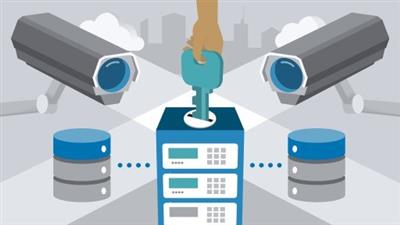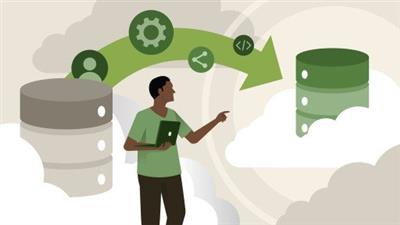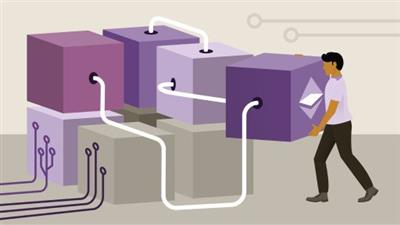
 |
 Ognyan Aleksandrov Zahariev | Duration: 120h 00m | Video: H264 1914x1074 | Audio: AAC 44,1 kHz 2ch | 142 GB | Language: English This course will take you through the entire process of making a Harry Potter style magical classroom scene with multiple software, including scene concept planning, reference material collecting, main scene gray models constructing, wooden podium, iron ring, paper book, candle, chalk, glass jar and other material assets creating, texture mapping, UE4 lighting settings and real-time rendering, etc. In addition, you will learn the entire process of sculpting owls in ZBrush, including body modeling and hair sculpting skills. The assets of this course are all created from scratch. Through this course, you will be able to master the trick of completing a real-time scene independently.  MP4 | Video: h264, 1280x720 | Audio: AAC, 44.1 KHz, 2 Ch Skill Level: Beginner + Intermediate | Genre: eLearning | Language: English + srt | Duration: 1h 27m | Size: 216.8 MB Zoom has worked its way into the professional and social lives of millions. In this course, staff instructor Garrick Chow goes over the fundamentals of this popular video conferencing tool, explaining how to host, attend, schedule, and collaborate in Zoom meetings and webinars-both on your laptop and mobile device. Garrick begins by showing how to set up your Zoom account and adjust audio and video settings (as well as choose fun virtual backgrounds and filters). Next, he walks through how to host your own meeting and participate in meetings scheduled by others. Garrick covers how to use a variety of options during meetings such as how to control another participant's computer to easily troubleshoot issues, create breakout rooms, provide nonverbal responses, and more. Finally, he offers tips for scheduling and hosting your own Zoom webinars.  MP4 | Video: h264, 1280x720 | Audio: AAC, 44.1 KHz, 2 Ch Skill Level: Intermediate | Genre: eLearning | Language: English + srt | Duration: 2h 16m | Size: 385.1 MB The Systems Security Certified Practitioner (SSCP) certification is an excellent entry point to a career in IT security. To help you prepare for the SSCP exam, instructor Mike Chapple has designed a series of courses covering each domain. In this installment, Mike covers the objectives of the first domain, Security Operations and Administration, which comprises 16% of the questions on the exam. Topics include the security triad, data security, security controls, and compliance training. Learn about core concepts and the security code of ethics, and find out how to document controls, start asset and change management programs, conduct security awareness and training, implement physical controls, and assess the compliance of your organization.  MP4 | Video: h264, 1280x720 | Audio: AAC, 44.1 KHz, 2 Ch Skill Level: Intermediate | Genre: eLearning | Language: English + srt | Duration: 24m | Size: 60.5 MB UX designers use a variety of methods to communicate the user experience. In this course, Diane Cronenwett, a specialist in solving complex design problems, offers an overview of the deliverables expected from a UX designer, including heuristic reviews, usability reports, information architecture, flow diagrams, wireframes, and interaction documents. For each type of deliverable, Diane offers useful tips and techniques for delivering it. She explains standards of usability and shows you some important considerations in making sure you deliver what a particular deliverable's target audience actually needs.  MP4 | Video: h264, 1280x720 | Audio: AAC, 44.1 KHz, 2 Ch Skill Level: Intermediate | Genre: eLearning | Language: English + srt | Duration: 1h 12m | Size: MB Cloud skills are in high demand. Cloud admins can improve their career prospects by learning about the big three platforms (AWS, Azure, and Google Cloud Platform). Admins for organizations that use a multicloud strategy may find they need to be able to work with all three to do their jobs. In this course, instructor Sharon Bennett provides existing Azure admins with a foundational understanding of Google Cloud Platform (GCP) and makes it relatable to their existing understanding of Azure. Sharon explains GCP architecture and enterprise application services. She shows you the GCP management console, as well as the services used for cost management and monitoring. Sharon walks you through security features, storage options, and virtual machines and networks. She concludes with a discussion of database services available in GCP and how you can create your own database.  MP4 | Video: h264, 1280x720 | Audio: AAC, 44.1 KHz, 2 Ch Skill Level: Intermediate | Genre: eLearning | Language: English + srt | Duration: 25m | Size: 460.7 MB Have you wondered how blockchain can help you create applications that offer greater transparency, traceability, efficiency, and resilience while lowering your costs? This course, fourth in a series of eleven, goes in-depth on the tools you need to develop your code. Instructor Michael Solomon walks you through the tools you'll need from your Ethereum development toolbox, such as the blockchain client (EVM), local and public test blockchains, and more. Michael shows you how to download and install Go Ethereum (Geth), the command-line interface blockchain client. Then he steps through installing Ganache, the test blockchain that you will use in this course; Truffle, the development environment and testing framework; and Microsoft Visual Studio Code, a free integrated development environment (IDE).  MP4 | Video: h264, 1280x720 | Audio: AAC, 44.1 KHz, 2 Ch Skill Level: Intermediate | Genre: eLearning | Language: English + srt | Duration: 49m | Size: 895.9 MB Have you wondered how blockchain can help you create applications that offer greater transparency, traceability, efficiency, and resilience while lowering your costs? This course, third in a series of eleven, introduces you to everything you need to write and test smart contract code in Ethereum. Instructor Michael Solomon discusses the parts of the Ethereum blockchain, such as of decentralized apps (dApps), blocks, and miners. Michael covers smart contracts, smart contract languages, and the Ethereum Virtual Machine (EVM) that ensures every node on the blockchain keeps the same copy of the blockchain. He explains the concept of fueling your code with gas, then goes into the tools you need to follow the software development life cycle (SDLC) for Ethereum. After describing a blockchain client, Michael concludes by showing you the tools you need to write and test your smart contract code. |